El Deposito Discovering the Forgotten Waterways and Heroism Beneath San Juan
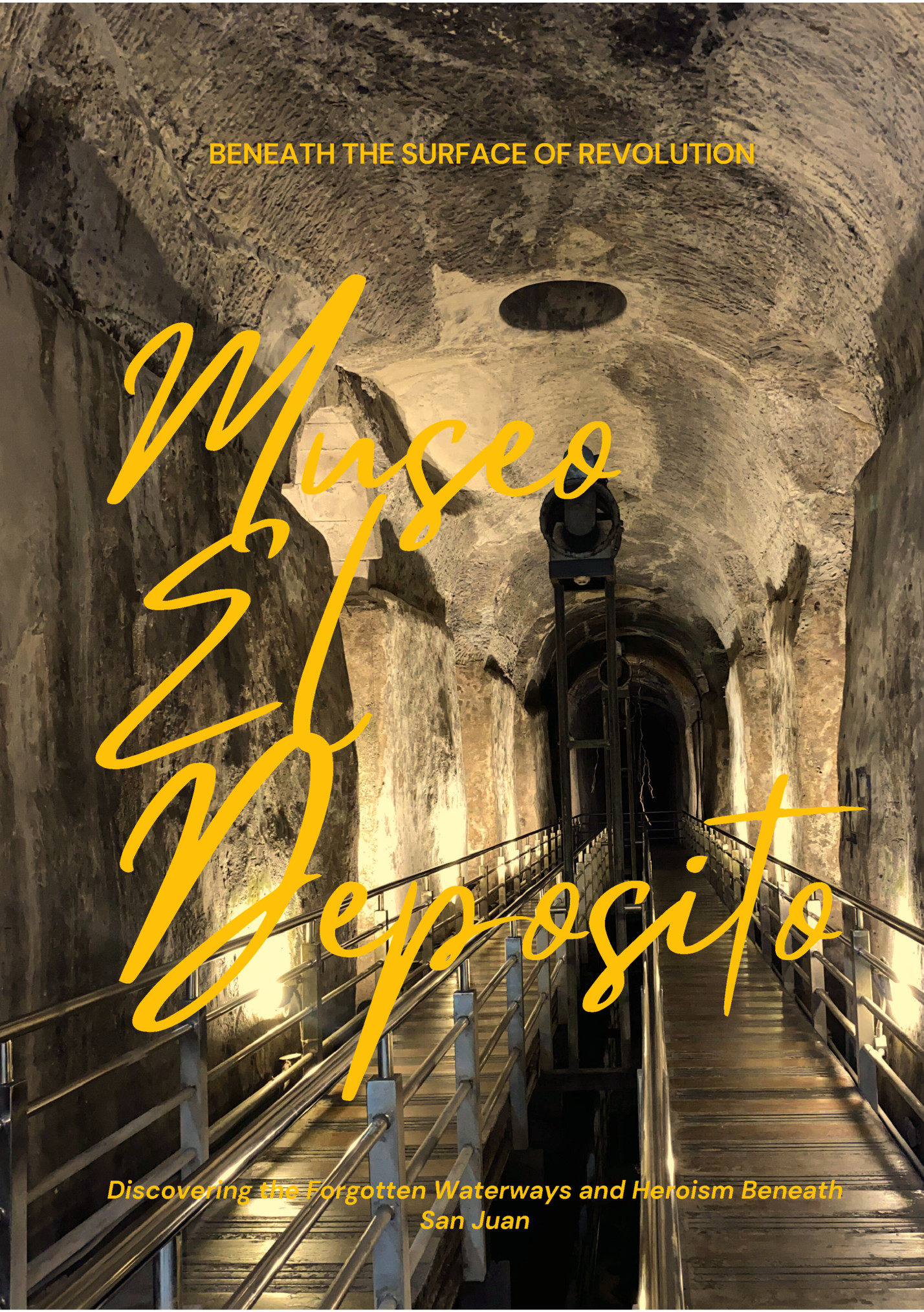
powerful reminder of our nation's layered history —Museo El Deposito. This hidden gem doesn't just preserve bricks and pipes; it safeguards stories of life, power, and revolution. Built above the once-secret reservoir that sustained old Manila, the museum now welcomes Filipinos and global visitors to uncover what lies beneath our feet—and our history.
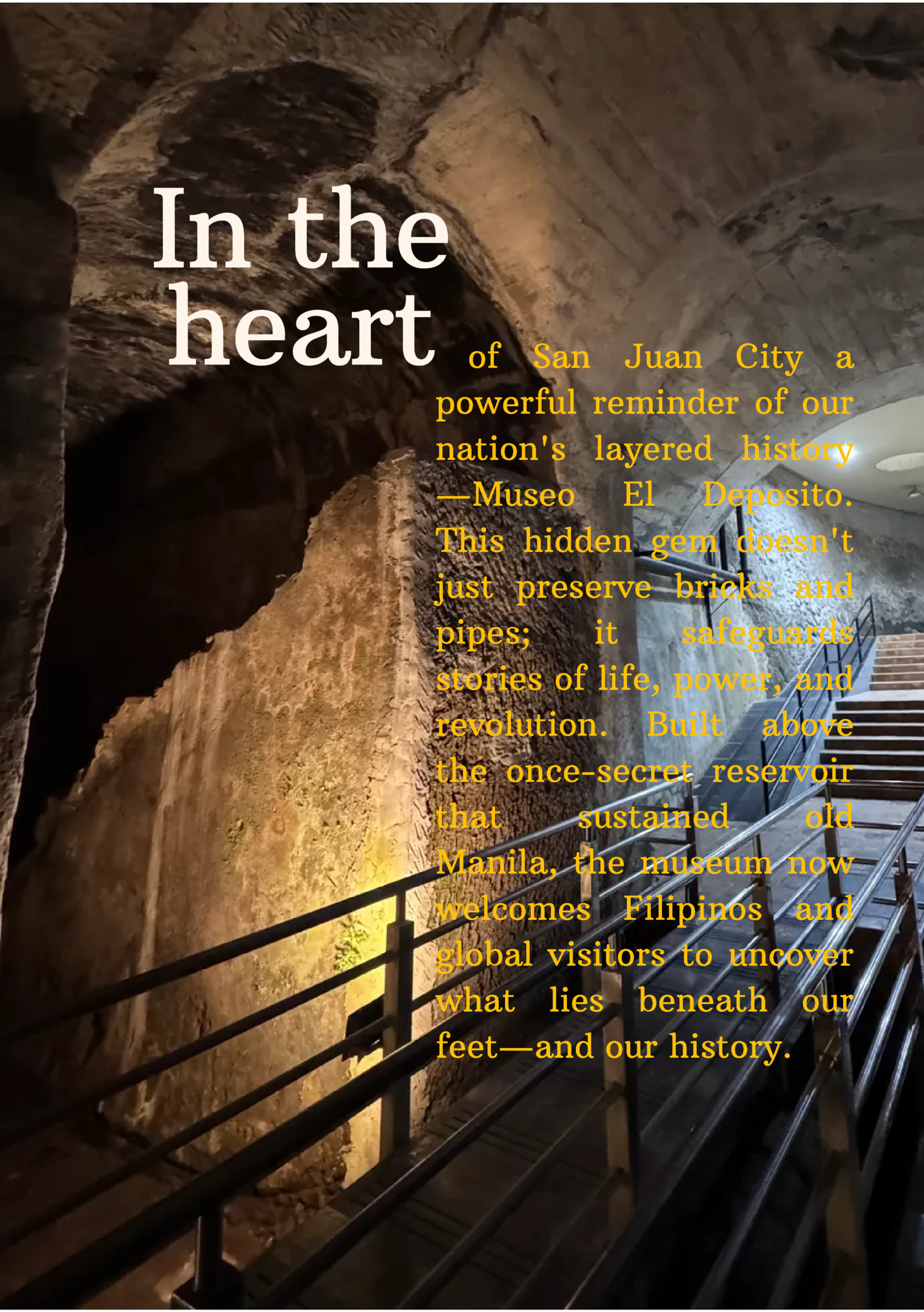
vast underground reservoir constructed in 1882 during the Spanish colonial era. The water system was originally part of the Carriedo Waterworks—Manila’s first centralized water supply— funded by a legacy from Spanish naval officer Francisco Carriedo y Peredo. Located within the Pinaglabanan Memorial Shrine compound, the museum was inaugurated in 2019 by the National Historical Commission of the Philippines (NHCP). It was created not only to highlight the impressive engineering behind the reservoir but also to honor the revolutionary moments tied to the site. Museo El Deposito tells a story where water, infrastructure, and freedom converge.
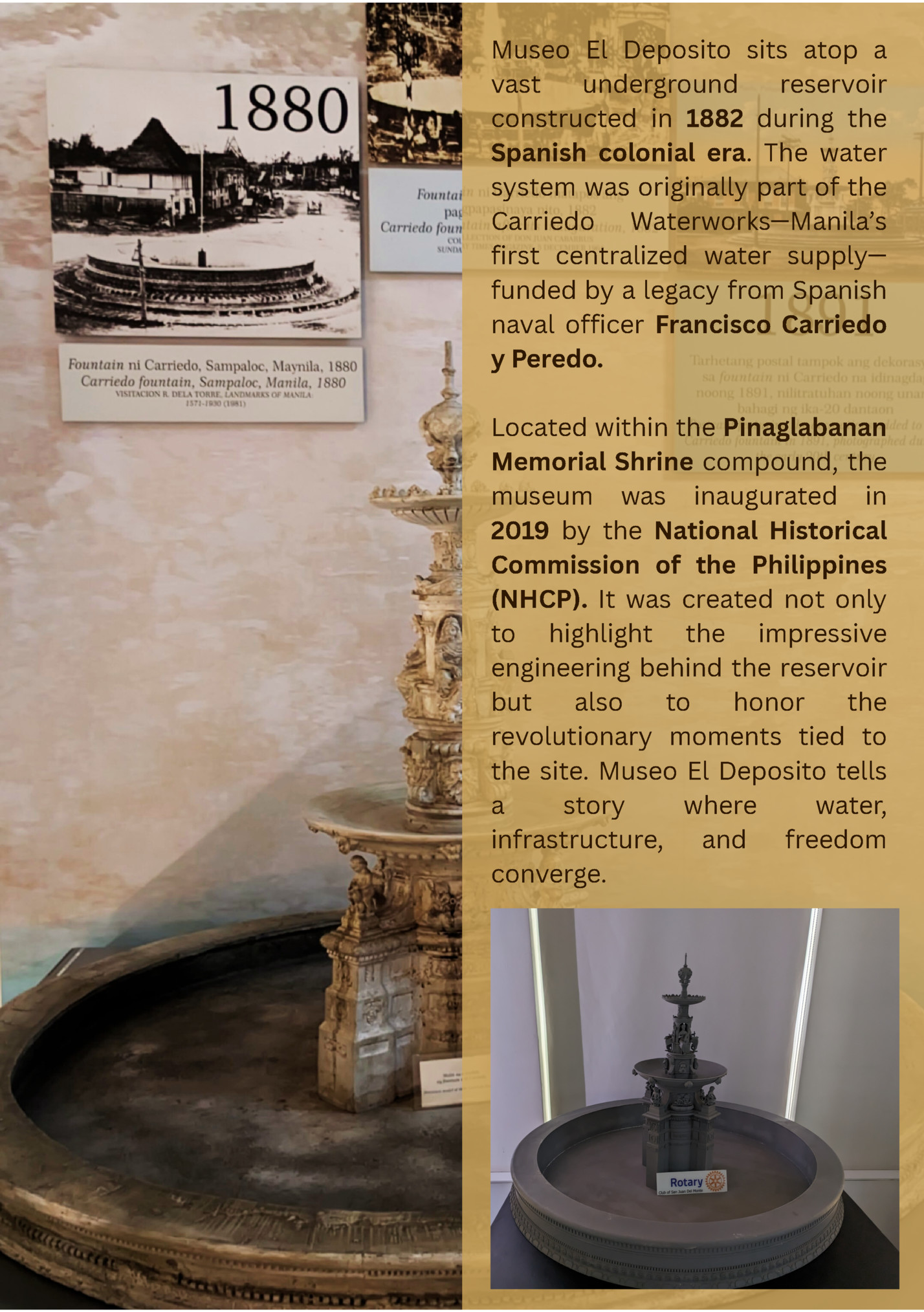
colonial engineering at its peak. Hidden 12 meters below ground, the reservoir covers about 8,300 square meters and once held 56 million liters (roughly 15 million gallons) of clean water. Its vaulted ceilings, arched brick chambers, and thick stone pillars create an eerie but aweinspiring atmosphere. The structure was designed to use gravity for water distribution, pushing water from Marikina River springs through aqueducts, then to the city. This silent system supported thousands—but was also tightly controlled by colonial rulers, restricting access for ordinary Filipinos.
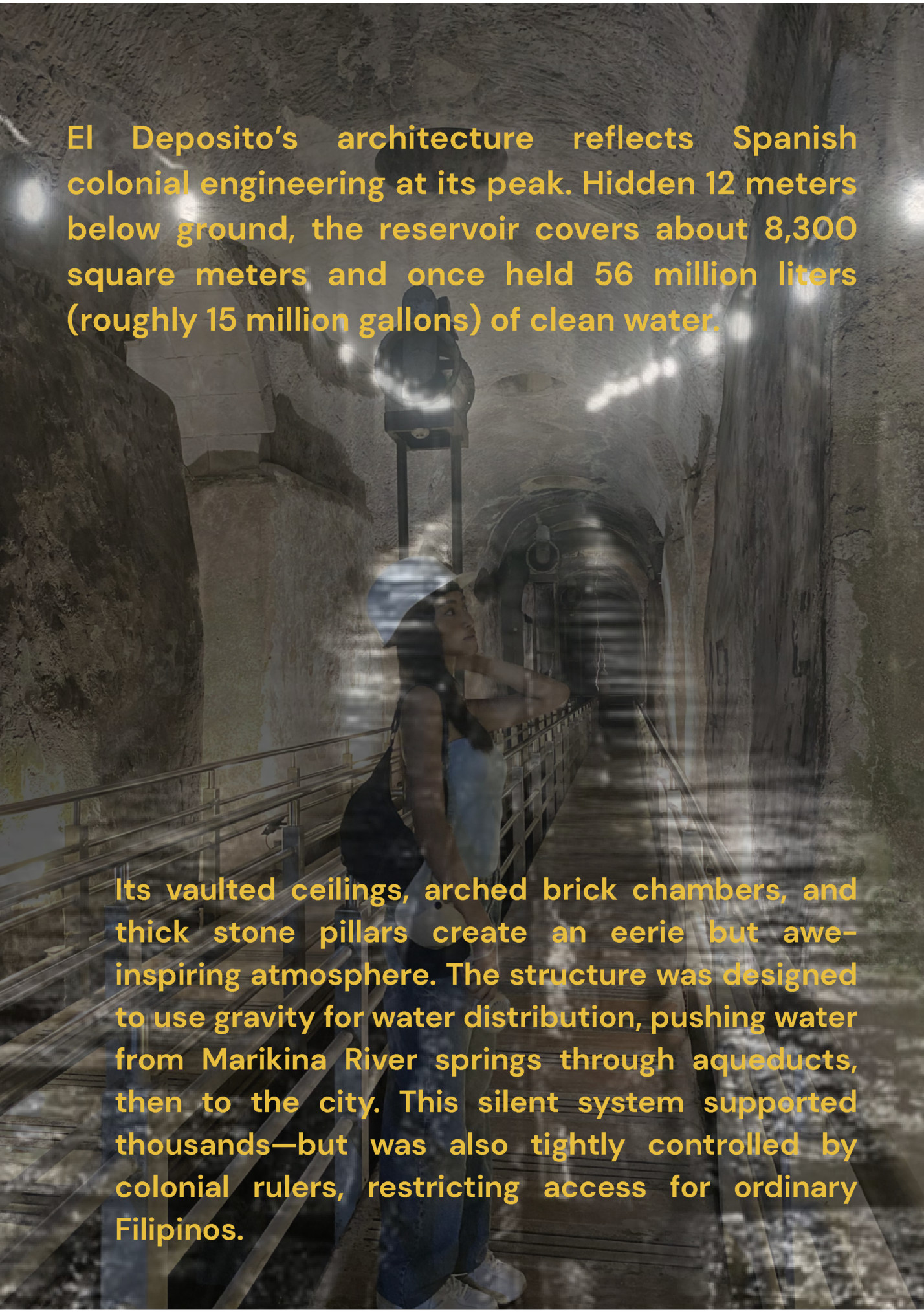
El Deposito is not only a marvel of civil engineering—it is a battlefield. On August 30, 1896, the Katipunan staged one of their earliest armed revolts here: the Battle of San Juan del Monte. The rebels aimed to seize the reservoir, knowing its strategic importance. Controlling El Deposito meant controlling water—and weakening Spanish power. Though the attempt was repelled, it marked a critical beginning to the Philippine Revolution. The very tunnels that once quietly supplied water now echoed with the footsteps of revolutionaries, making El Deposito a silent witness to the cry for independence. Museum Today Today, Museo El Deposito serves as a heritage and learning hub. The museum’s interior features a blend of historical artifacts and modern technology. Visitors can interact with touchscreen panels, view scale models, inspect ancient pipes, and immerse themselves in reconstructed scenes of 19th-century life. Beneath the museum, a portion of the reservoir has been opened to the public. The preserved underground space evokes a strong sense of place—where history is not only told but felt. School groups, historians, and casual tourists alike find value in this immersive educational experience.
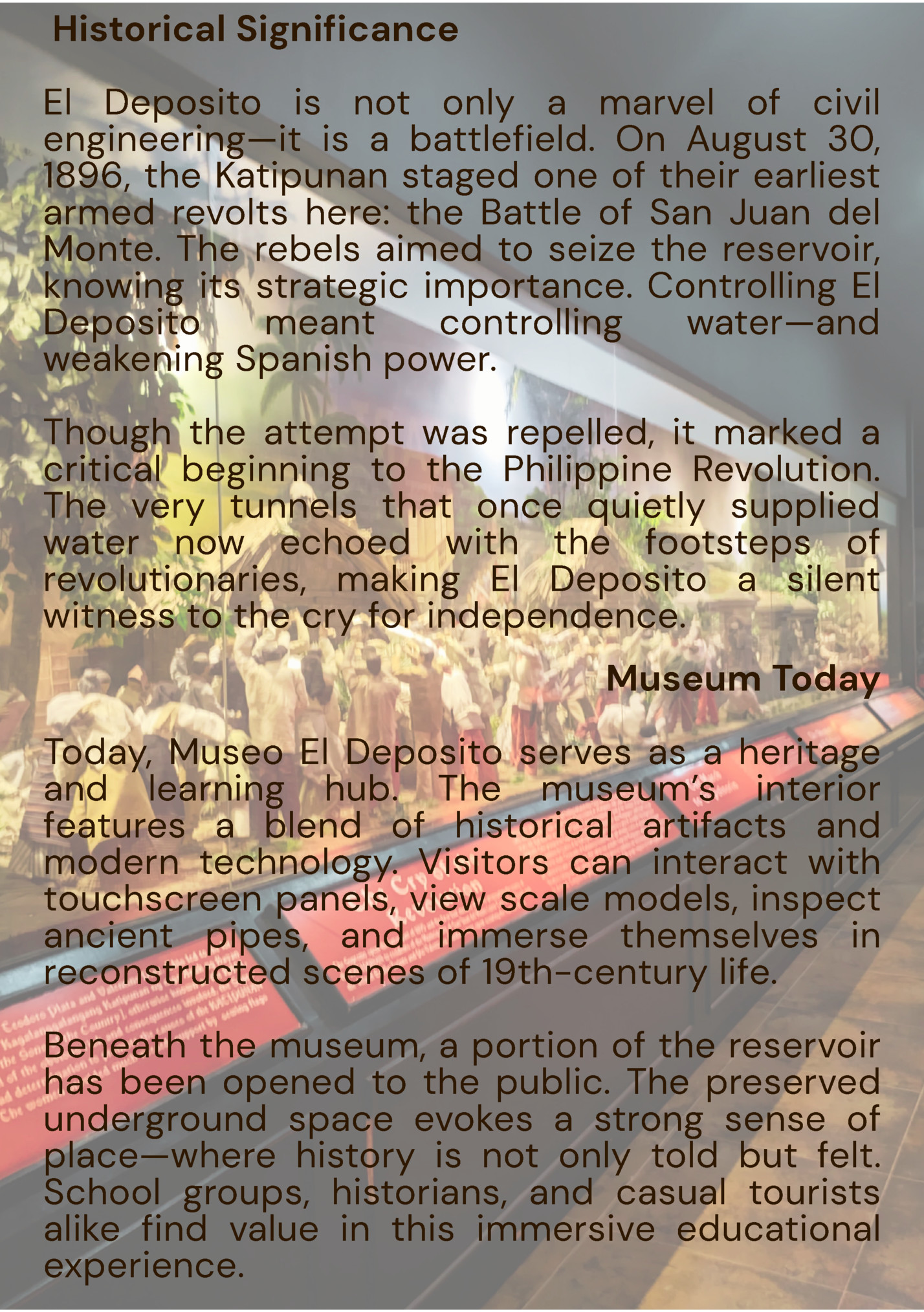
at Pagmumuni: Mga Tanong Mula sa Aking Karanasan sa Museo El Deposito
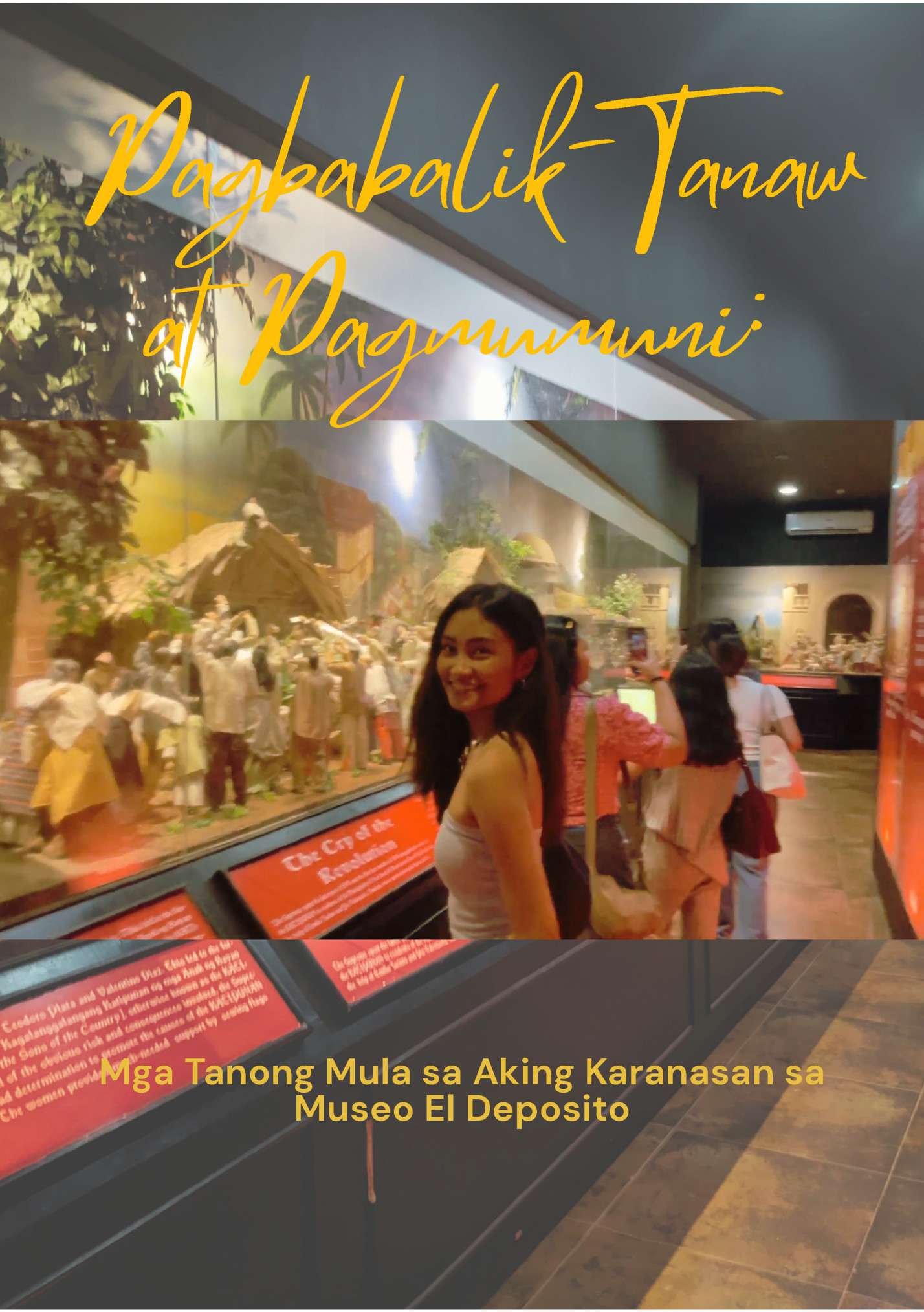
highlighted in the museum? Ang Museo El Deposito ay nagpapakita ng mga aspeto ng kasaysayan na madalas hindi napapansin lalo na ang tungkol sa imprastraktura ng tubig noong panahon ng Kastila at kung paano ito konektado sa ating rebolusyon. Makikita rito kung paano ginamit ng mga mananakop ang sistema ng patubig para kontrolin ang mga mamamayan, pero sa huli, naging mahalagang lugar ito sa laban para sa kalayaan. Bukod sa teknolohiya, naipapakita rin dito ang kabayanihan ng mga Katipunero at ang tapang ng mga Pilipino noong panahon ng kolonyalismo. What stories do the exhibits tell about our past and present? Ipinapakita ng mga eksibit ang buhay ng mga Pilipino bago pa man magkaroon ng modernong sistema ng tubig. May bahagi rin tungkol sa Carriedo Waterworks na unang centralized water system ng Maynila, pati ang mismong laban ng mga Katipunero sa Battle of San Juan del Monte. Ipinapakita nito na kahit teknikal o tila simpleng pasilidad lang ang El Deposito, parte ito ng mas malawak na kwento ng pakikibaka at pagbabago. Sa kasalukuyan, nagsisilbi itong paalala kung gaano kahalaga ang ating mga pinagdaanan bilang bansa.
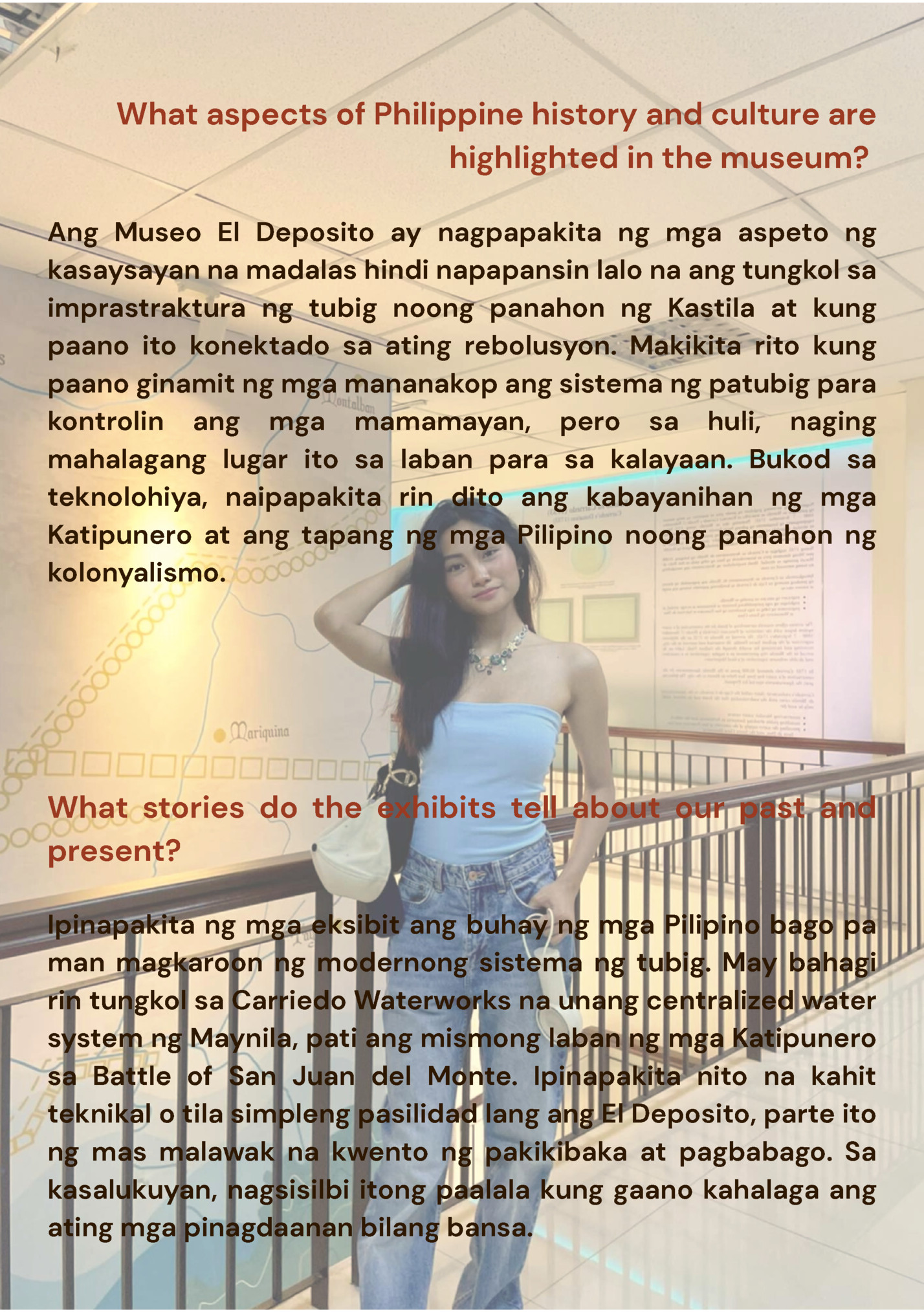
the most during your museum visit? Why? Yung parte ng museo na nagpapakita ng underground reservoir mismo ang pinaka tumatak sa akin. Isang bagay na sobrang tahimik at hindi mo aakalain na may ganung kahalagang kasaysayan pero dito naganap ang isang mahalagang bahagi ng rebolusyon. Nakakatindig-balahibo kasi habang naglalakad ka sa loob, maiisip mong dito rin naglakad ang mga Katipunero. Sa gitna ng dilim at katahimikan, ramdam mo yung bigat ng kasaysayan. What did you learn about your local or national identity through this experience? Na-realize ko na ang pagiging Pilipino ay hindi lang tungkol sa wika o mga tradisyon ito ay nakaugat sa sakripisyo, pagkakaisa, at katapangan. Kahit ang mga lugar na tingin natin ay walang saysay, tulad ng lumang imbakan ng tubig, ay may malalim na kwento. Bilang kabataan, importante na hindi lang natin alam ang ating kasaysayan, kundi maramdaman din natin ito. Sa ganitong paraan, mas tumitibay ang ating identidad bilang Pilipino.
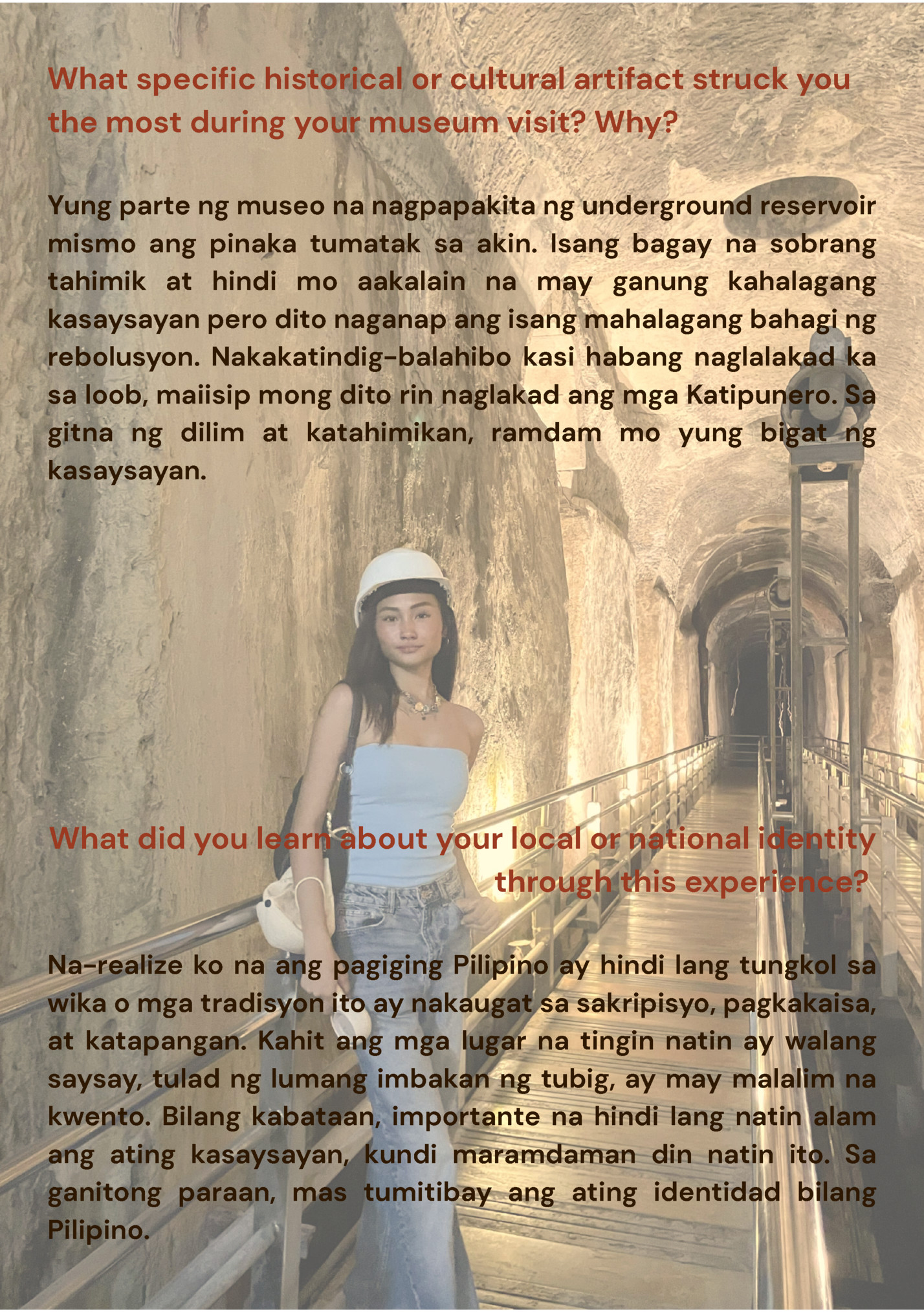
preservation in their own communities? What actions can we take to promote and protect our national patrimony? Pwedeng magsimula sa simpleng pagbisita sa mga lokal na museo, pag-share ng natutunan sa social media, o pagsali sa mga heritage tours. Pwede rin tayong gumawa ng mga content tulad ng vlog, podcast, o artworks na nagpapakita ng halaga ng kasaysayan. Bilang student, may boses tayo at may access tayo sa teknolohiya gamitin natin ito para i-promote ang mga kwento ng ating bayan. Mahalaga rin ang pagiging maingat at mapanuri: alamin kung paano natin mapoprotektahan ang mga lugar na makasaysayan, hindi lang pisikal kundi pati sa kamalayan ng mga susunod na henerasyon.

Fleepit Digital © 2021